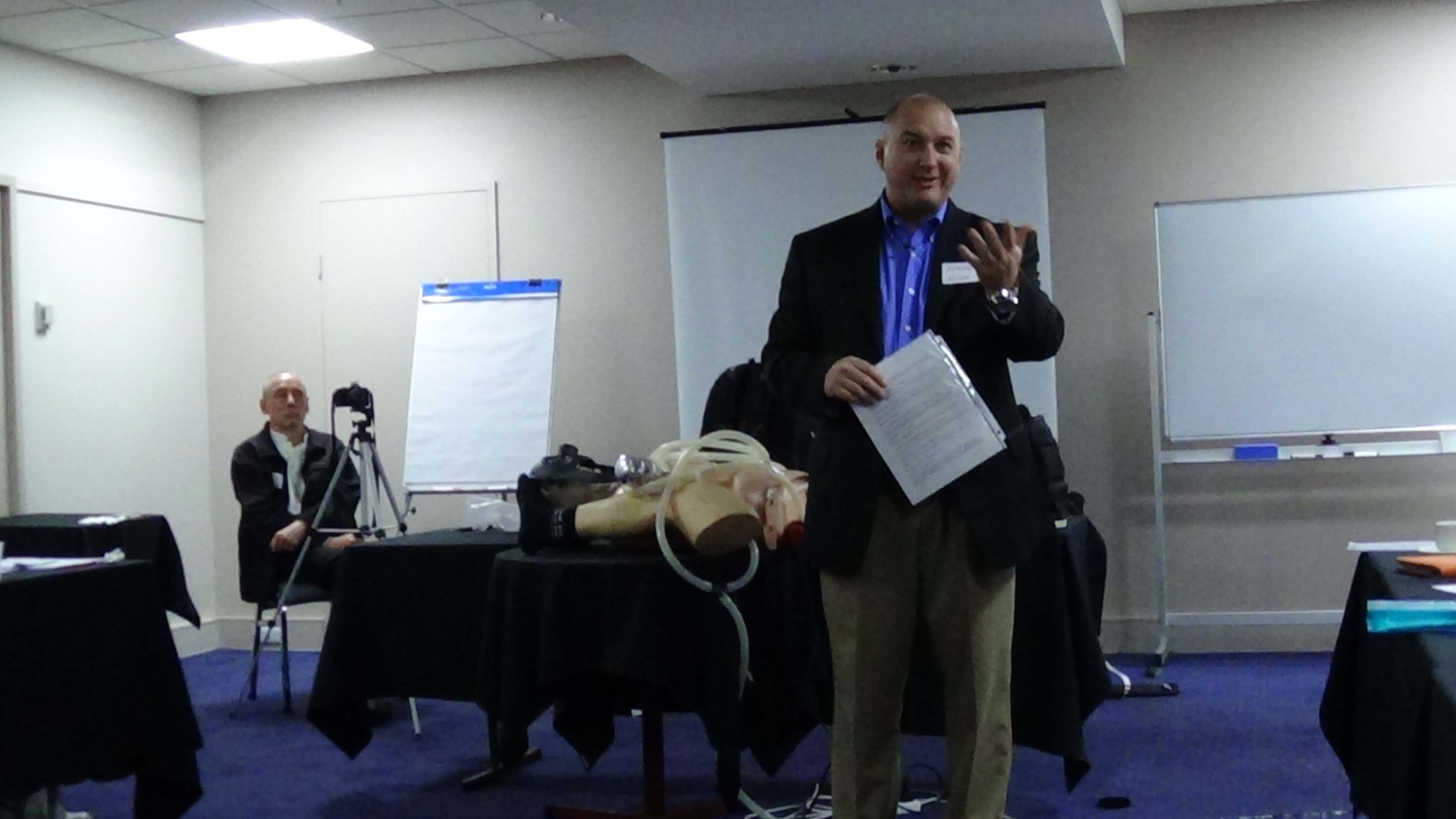Judging from the feedback, the training visit by Aaron Drake, Alcor’s Medical Response Director, went exceedingly well. The aim was primarily to provide training for professionals and laypersons on the newer techniques for partial vitrification prior to transportation to the cryonics facility. These new methods allow patients to be brought down to dry ice temperatures (about -78 degrees C) and be partially vitrified. Vitrification is a low temperature glass-like state which retains cell and organ structure with minimal damaging ice formation. This dry ice temperature state allows up to two weeks of traveling time enabling the patient to be transported overseas or the vast distances within Australia with virtually no deterioration. Full vitrification may then be conducted at the destination point facility.
The event was a very successful collaboration between Cryonics Association of Australia (CAA) and Stasis Systems Australia (SSA) and, of course, all the others who had donated to make it possible. I coordinated the event wearing my SSA Director’s hat for SSA, and Philip Rhoades, the Executive Officer of CAA and a Director of Neural Archive Foundation (NAF), coordinated for CAA.
The main sessions were over two days with additional feedback periods over the next couple of days, together with some very enjoyable social occasions. The first of the main sessions was for professionals attended by 7 people from the medical and funeral industry. The second was for interested laypersons and was attended by about 17 people. While the events provided valuable training, it also allowed cryonists from around Australia to meet and share their enthusiasm and views regarding cryonics, as well as quite a few other topics.
We were also fortunate enough to have a team from Melbourne making a documentary on a cryonics topic who agreed to film the two main sessions using their professional equipment. Philip and I also filmed most on it on our more modest cameras. We therefore have a valuable record of the training. For the professional session this will need to be combined with the more detailed professional processes Aaron has and will be sharing with us at a later date.
Although our primary purpose was to provide training we achieved so much more, which will be useful for cryonics in Australia.
- We now have close contacts and a personal relationship with a network of professionals with training who we believe can cover most of Australia for preparation and transportation to a cryonics facility. Again we will still need the more detailed processes from Aaron to complete this training.
- We have a solid network of laypeople who can be involved in the less professional work associated with an early response to a cryonics patient’s needs.
- We have the initial training material that can be used to train others both professional and non professional.
- We had close cooperation between SSA and CAA and showed that if there are enough interested in these events we may plan more.
- We developed a good personal relationship with Aaron and as a result strong links to Alcor for future joint cooperation activities.
- One of the embalmers present is the Chair of the British Institute of Embalmers, Australasian Division, and has invited Aaron to present to a training session at their 2015 conference.
My next steps are to follow up on all these and, in particular, to develop suitable procedures and a network, which will be workable in Australia to cover standby, stabilization, partial vitrification and then transportation. To this end I will also be traveling to the US in early May 2014 to talk further with those at Alcor and at the Cryonics Institute. I will also be covering a wide range of other cryonics topics with them, which I will discuss in a subsequent blog entry.
Regards, Peter T


